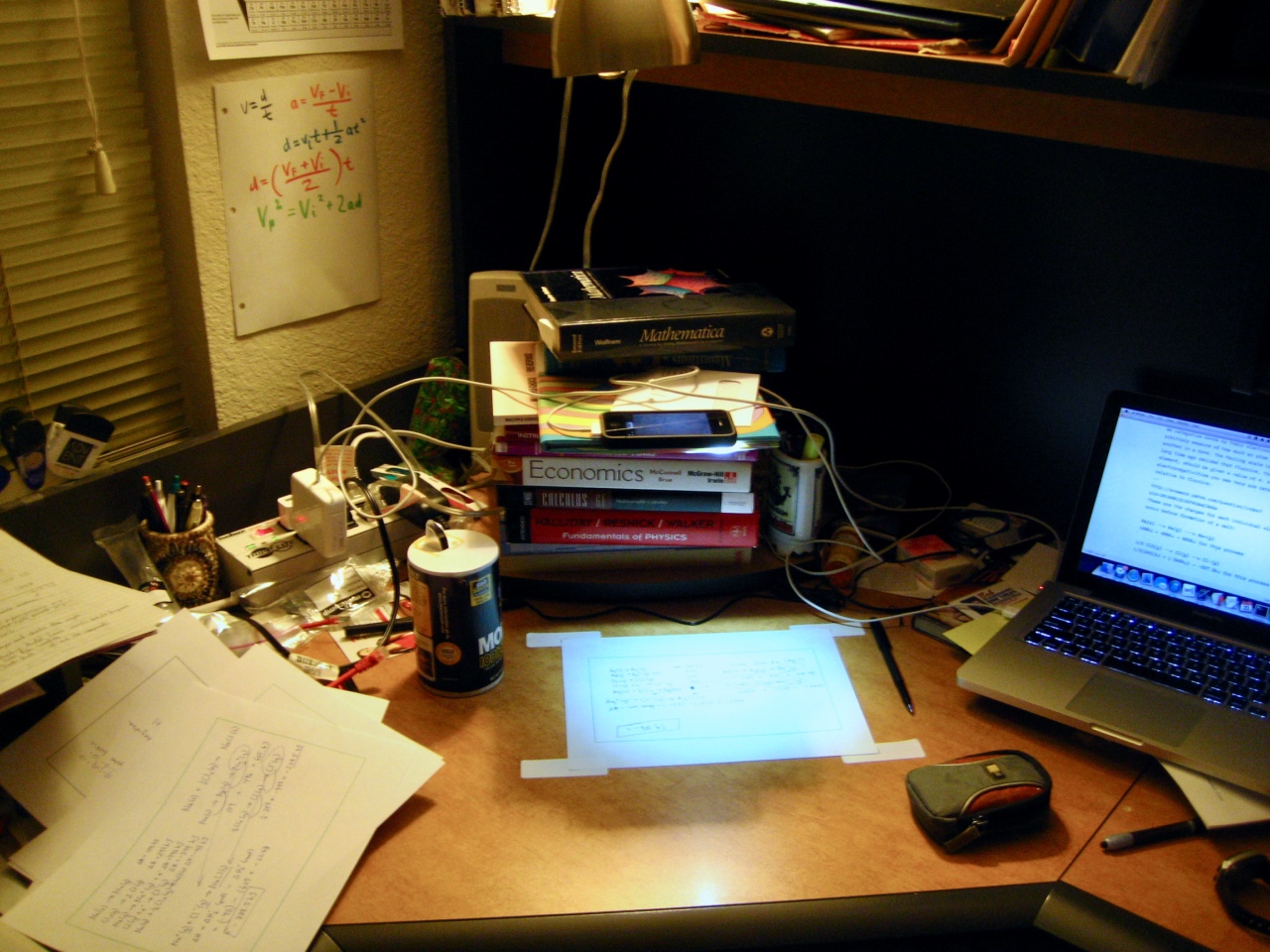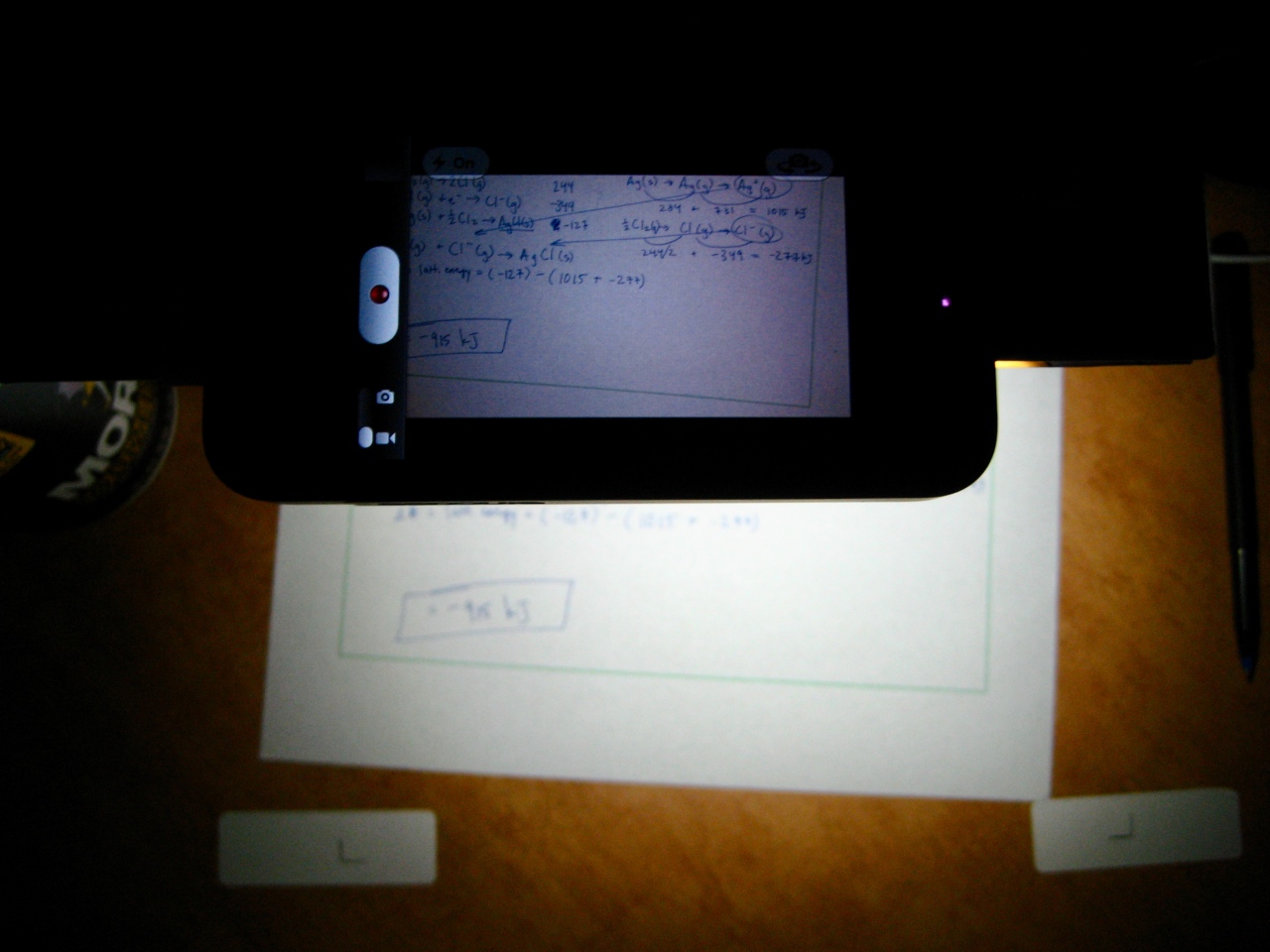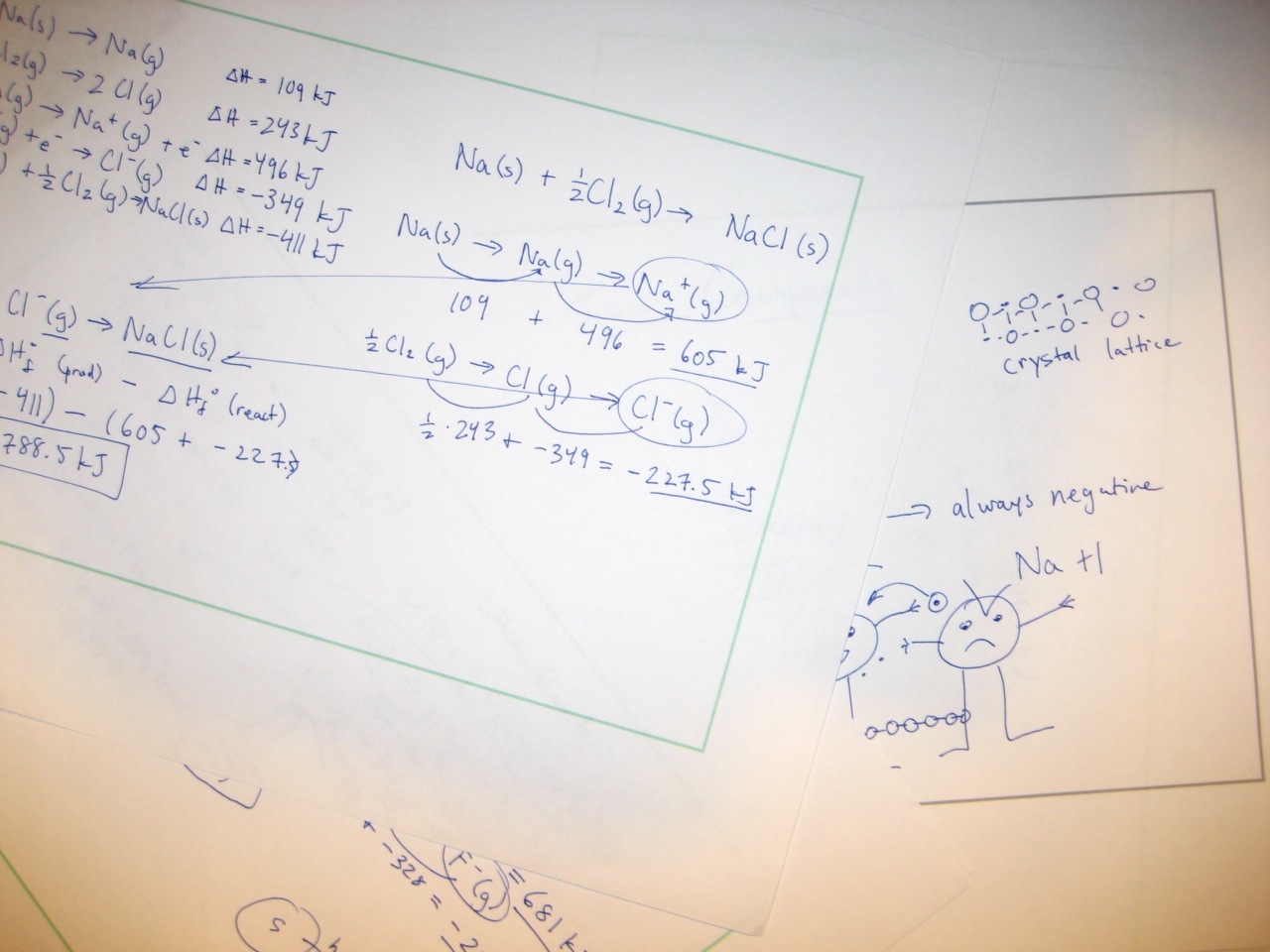In our school’s AP Chemistry program, we are allowed an extra credit project at the end of the first semester. I chose to make a video tutorial about calculating lattice energy because I had trouble with in the past. Since it’s one of the more challenging and creative assignments I’ve done for school, it deserves a quick writeup.
The project took about six hours in total. I started by finding and solving a few lattice-energy problems from the Internet. I decided how to introduce lattice energy and wrote a script. It’s deliberately repetitive because we “must cross the line between ignorance and insight many times before we truly understand” (source). That was the easy part.
The harder problem to solve was the technical one: how to record my tutorial. I’m not a fan of tablets with styluses, because a real pen and paper feel have better control even though they can’t undo. I decided to explain the problems on paper and record it with my iPhone. My Glif+ adapter allowed me to mount my phone on a tripod, but no tripod could shoot straight down. To avoid skewing the image, I opted to hold my phone with a stack of books:
The thin Dr. Seuss book protrudes from the rest so that the camera can’t see the stack of books. I had to counterbalance it with Mathematica and Algorithms in C++. I padded one side of the phone with an envelope for some minor skew correction. The phone was connected to my computer to keep it charged and to download footage periodically.
For lighting, the iPhone’s built-in flash turned out to be the best choice. Because the flash and the camera are so close together, my hand’s shadow wasn’t visible from the camera’s point of view. This also allowed me to darken the room during shooting to prevent stray shadows from other lights:
I measured the camera’s field of view and printed papers with boxes on them. Combined with the alignment guides that I taped to my desk, the boxes gave me an estimate of where to stop writing.
Believe it or not, that photo isn’t filtered. The vignette is from a camera flash, and the colors are from the difference in color temperature between my light and the flash.


